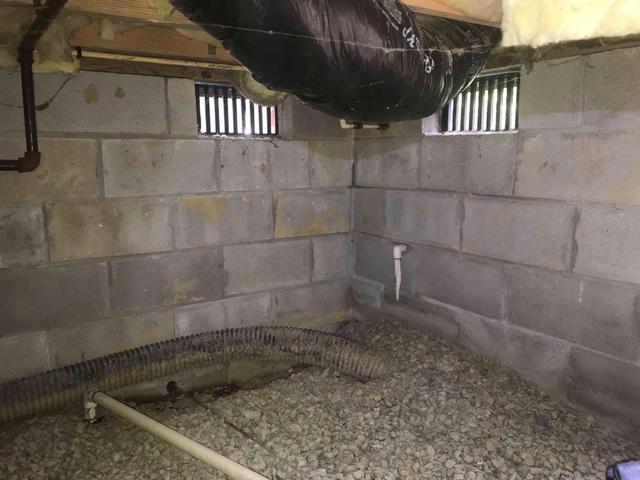
Open Vents on Foundation Walls
There are open vents lining the foundation walls that allow outside air and moisture to freely enter the crawl space and affect the environment. The idea behind these vents was to allow the outside air to dry out and ventilate the crawl space, but instead, moisture becomes trapped in the space, increasing the relative humidity, which can lead to mold and mildew growth.
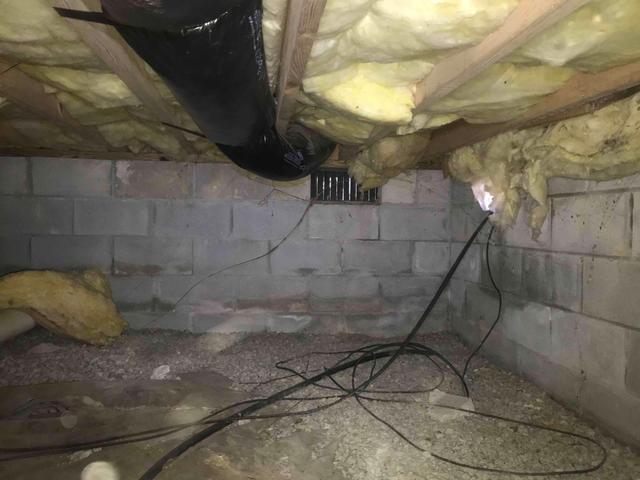
Foundation Walls of Crawl Space
Efflorescence and staining are visible on the foundation walls, an indication of water infiltration. Efflorescence forms when outside water seeps through the porous cinderblock walls, pulling the salts and sediments to the surface, leaving behind a white powdery residue as the moisture evaporates. Water puddles forming around the exterior of the foundation walls are often the cause of efflorescence and moisture infiltration in the crawl space.
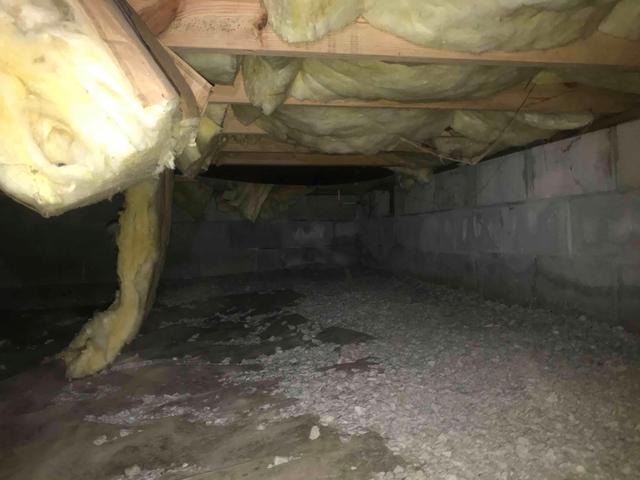
Dirt Flooring and Drainage Rocks
The builder put in drainage and drainage rock at the construction of the home. However, because the ground is not covered and sealed, moisture still evaporates rising into the space and increasing the relative humidity. Small critters and pests, such as termites and spiders, love this sort of environment, and service persons find it difficult to perform their work in the crawl space.
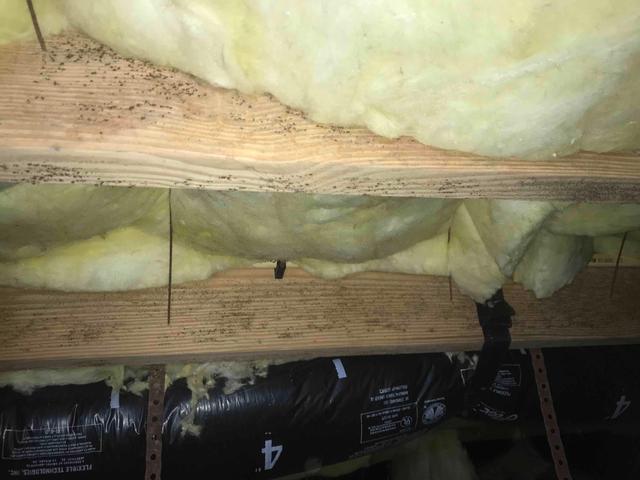
Mold and Mildew Growth
Mold and mildew growth is clearly visible on these floor joists. This is a symptom of the crawl space being unsealed and unprotected from outside air and moisture. When there are warmer temperatures and the relative humidity reaches at least 60%, mold and mildew can start to form on any organic materials within the crawl space. The musty odors and mold spores rising from the crawl space into the living space above can irritate those with asthma and allergies.
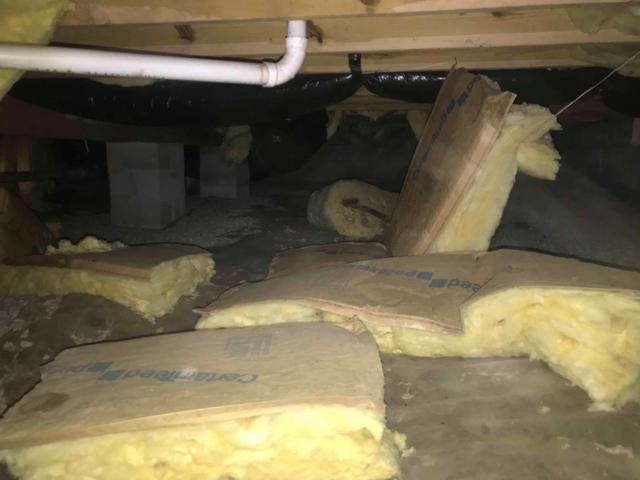
Fiberglass Insulation
Many of the fiberglass insulation batts have fallen out of their positions in the floor joists and are scattered around the crawl space floor. This is yet another effect of having too much moisture in the crawl space. The fiberglass acts much like a sponge, absorbing the moisture content and becoming too heavy to sit in the floor joists.
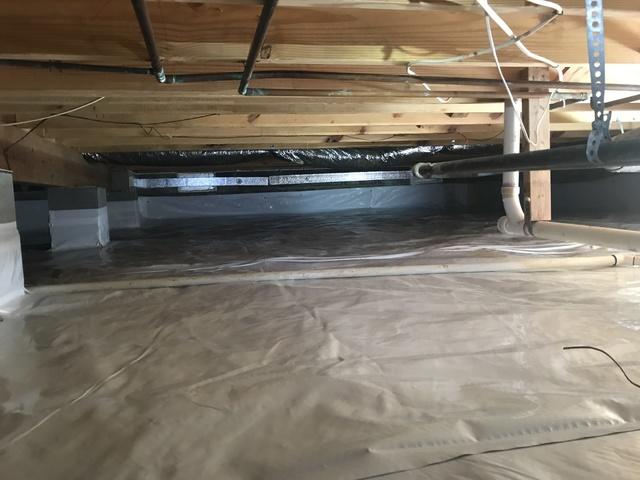
CleanSpace Vapor Barrier
A heavy-duty 20-mil CleanSpace liner was used to cover the flooring of this crawl space. This vapor barrier helps to prevent moisture from rising into the crawl space and increasing the relative humidity. It gets wrapped around all piers and mechanically fastened to the foundation walls six to eight inches above outside grade. An antimicrobial called UltraFresh is built into the 7-layer polyethylene liner to help prevent mold and mildew growth on the vapor barrier itself.

Foamax Insulation
Foamax foamboards have been installed on the foundation walls to help protect the crawl space from outside influence. These custom-cut foamboards are an inch and a half thick and are mechanically fastened to the foundation walls. All cracks and corners of these boards are sealed with can foam, and a two-inch viewing strip is left for termite inspectors.
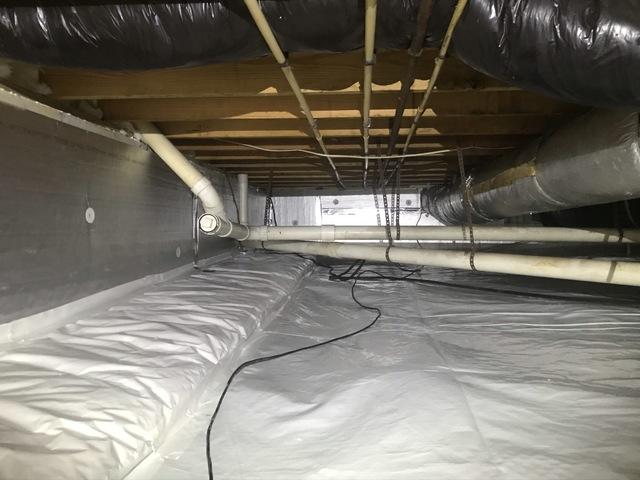
Sealed Vents, Sill Plate, and Rim & Band
The open vents lining the foundation wall are not only covered by the Foamax boards, but precisely cut foamboard pieces are placed in the interior of the vents and sealed with can foam. This cuts off the constant flow of outside air and moisture that would otherwise enter the crawl space and affect the air quality and relative humidity. The rim band and sill plate are also sealed with foam. These are major areas where outside air and moisture can flood into the crawl space.

